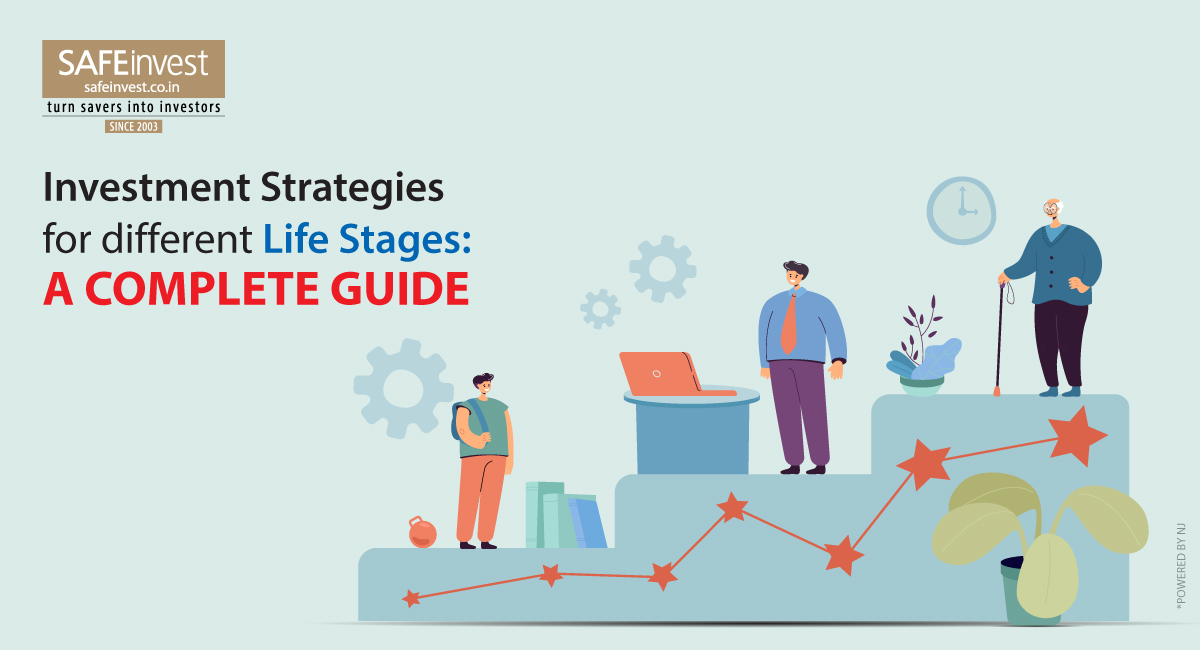Investment Strategies for Different Life Stages: A Complete Guide

When it comes to building wealth and securing your financial future, the approach you take cannot remain the same throughout life. As your responsibilities grow and your financial objectives shift, your investment strategies should also evolve. Many people ask, What are investment strategies, and how do they work across different stages of life?
This guide will walk you through the types of investment strategies best suited for different life stages and help you understand how evolving life stage investing can set you on the right path toward financial independence.
WHAT ARE INVESTMENT STRATEGIES?
Before diving into the life-specific approaches, let’s clarify the concept. Investment strategies are methods or plans that investors use to determine how to allocate their money among various financial instruments, such as equities, debt, real estate, and more. The idea is to balance risk and return depending on your needs.
For example, a young professional just starting might prefer a growth-oriented strategy with higher exposure to equities, while a retiree would shift toward income-generating and low-risk options. This shows that it is important to adapt your approach as your circumstances change.
IMPORTANCE OF LIFE STAGE INVESTING
Life stage investing ensures that your money works for you at every stage of life. Since your priorities in your 20s differ drastically from your priorities in your 50s, your investments should reflect those changes. By aligning your investment plan with your life stage, you can:
- Maximise growth when you are young and have time on your side.
- Balance stability and growth during midlife when responsibilities peak.
- Preserve capital and generate income during retirement,
Understanding the types of investment strategies that align with your life stage makes wealth building both systematic and sustainable.
INVESTMENT STRATEGIES BY LIFE STAGE
- Early Career (20s to early 30s): Focus on Growth
At this stage, you have time on your side. Even if you make mistakes, you can recover because compounding works best over long horizons.
Key Strategies:- Equity-heavy Portfolio: Focus on stocks, equity mutual funds, or index funds. These provide long-term growth with short-term volatility, which aligns with your long investment horizon.
- Start SIPs Early: Systematic Investment Plans (SIPs) in mutual funds are one of the most effective investment strategies for beginners.
- Build an Emergency Fund: Before investing heavily, keep 3-6 months of expenses in a liquid fund or savings account.
- Mid-Career (30s-40s): Growth with Stability
As you move into your 30s and 40s, responsibilities like family expenses, children’s education, and home loans come into play. At this stage, your focus shifts slightly from aggressive growth to balancing risk and stability.
Key Strategies: - Diversified Portfolio: Combine equity,and other asset classes. Don’t rely solely on equities.
- Holistic Protection Plan: Health and term insurance become non-negotiable.
- Children’s Education Fund: Build an education corpus for your childrens’ higher education need.
- Pre-Retirement (40s-50s): Capital Preservation with Moderate Growth
At this stage, your retirement is approaching, and preserving capital becomes increasingly important. You cannot afford to take very high risks, but you still need moderate growth to outpace inflation.
Key Strategies: - Shift toward balanced Instruments: Gradually increase allocation to balance advantage funds.
- Reduce Equity Exposure: While you shouldn’t eliminate equities, keep them for moderate growth.
- Focus on Objective Completion: Ensure you are on track with children’s higher education and marriage funds. Most importantly, your retirement need is well in place as your active income is bound to cease in few years.
- Avoid new long-term Commitments: Do not take on large EMIs or park your money in illiquid investments.
- Retirement (60s & Beyond): Income and Stability
At this stage, your earning power is limited, and your investments need to generate regular income. The focus is no longer aggressive growth but rather stability, liquidity, and capital protection.
Key Strategies: - SWPs (Systematic Withdrawal Plans): Use SWPs from mutual funds to generate monthly income.
- Healthcare Planning: Keep funds in liquid assets for medical needs. Health insurance becomes critical.
TYPES OF INVESTMENT STRATEGIES
While life stage investing is crucial, understanding the broader types of investment strategies can help you make informed choices:
- Growth Investing: Prioritises capital appreciation through equities. It is best for early career stages.
- Value Investing: Focuses on undervalued stocks for long-term gains.
- Income Investing: Prioritises generating steady income through dividends, bonds, or rental properties.
- Defensive Investing: Minimises risk by investing in stable, low-volatility assets. It is suitable for pre-retirement and retirement stages.
- Aggressive Investing: Seeks high returns with higher risk. It is best for young investors with a long horizon.
Choosing among these depends on your age, financial needs, and risk appetite.
FINAL THOUGHTS
Investment strategies are not static; they evolve as you progress through life. Understanding what investment strategies are and applying the right approach at the right life stage ensures financial security and peace of mind. And, the role of a relationship manager helps you strike the right balance between growth, stability, and income at different phases of your journey.
The key is to start early, stay disciplined, and adapt your portfolio to reflect your changing needs. Whether you are just beginning your career or enjoying retirement, choosing the right types of investment strategies will help you achieve your financial objectives while keeping risks under control.
Invest smart, grow steady, and secure every stage of life.
“Mutual fund investments are subject to market risks. Read all scheme-related documents carefully.”
